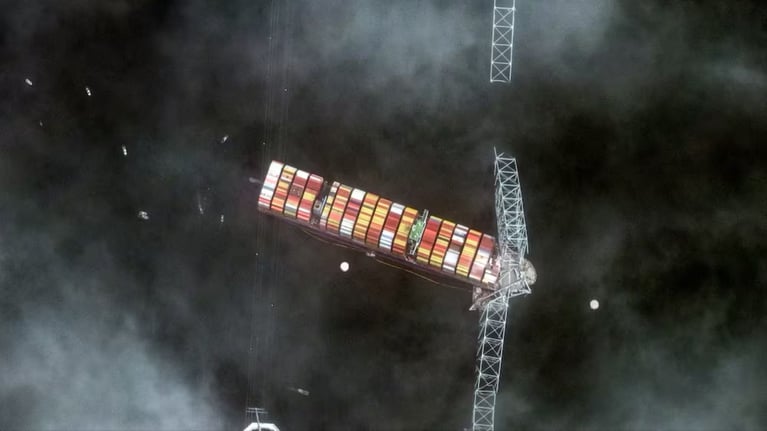
Mar 28, 2024
The Economic and Supply Chain Ripple Effects of Infrastructure Disruptions in Baltimore
The unexpected collapse of a major infrastructure link in Baltimore not only underscores the fragility of our global supply chains but also casts a spotlight on the substantial economic repercussions that ripple through our interconnected trade systems. This incident sheds light on the need for resilience and adaptability in our supply networks and economies.
The Economic Impact:
The collapse has immediate and profound economic implications, stalling over $80 billion worth of imports and exports that flowed through the Port of Baltimore just last year. This port, pivotal for its strategic role in the U.S. automotive industry, managed to process over 847,000 cars and light trucks in the same timeframe, solidifying its position as a critical node in the global automotive supply chain.Supply Chain Disruptions:
The incident has directly impacted approximately 15,000 jobs tied to the port's operations, highlighting the human cost of infrastructure failures. Beyond the immediate job losses, the disruption in the supply chain for European carmakers such as Volkswagen, BMW, and Mercedes-Benz, which have long relied on this artery for their U.S. market supply, spells delays and increased operational costs. Last month alone, leading importers through Baltimore included giants like Mazda, Volkswagen, Mercedes-Benz, Jaguar Land Rover, and Subaru.Adapting to Change:
Businesses affected by the disruption are now forced to reevaluate their logistic strategies, potentially seeking alternative ports and routes, thereby increasing logistical complexity and costs. The situation demands a swift and innovative response to mitigate the bottleneck and ensure the continuity of the supply chain.Opportunities for Innovation:
This disruption serves as a catalyst for change, pushing companies towards adopting advanced technologies like AI for predictive analytics and blockchain for greater transparency in the supply chain. It also prompts a critical reassessment of infrastructure investment, with a newfound focus on sustainability and resilience to withstand future challenges.The incident at Baltimore underscores a pressing global challenge: infrastructure, much of which was conceived and constructed in the last century, now interacts with modern logistical demands it was never designed to meet. The Francis Scott Key Bridge, opened in 1977, is a case in point. Built at a time when shipping traffic consisted of vessels far smaller than today's giants, the bridge's design did not anticipate the scale of modern maritime logistics.
The evolution of container ships, especially with the introduction of Neo-Panamax vessels in 2016 following the expansion of the Panama Canal, marks a significant leap in shipping capacity and vessel size. These colossal ships can carry more than twice the cargo of their Panamax predecessors, designed to maximize the expanded canal's dimensions. The Dali, involved in the Baltimore incident, represents this new era of maritime transport — a far cry from the ships the Key Bridge was expected to coexist with at its inception.
This discrepancy between the infrastructure's age and the rapid advancements in shipping technology highlights a critical oversight in how we plan and maintain such vital links in our supply chains. The Key Bridge, over four decades old, stands as a testament to a bygone era, now abruptly confronted with the reality of 21st-century commerce and transportation.
The introduction of Neo-Panamax container ships was heralded as a breakthrough in efficiency and economic gain for global trade. However, the recent collapse in Baltimore starkly illustrates the flip side of this progress: our existing infrastructure, much of it aging and designed under vastly different assumptions, is increasingly at odds with the demands of contemporary global logistics.
This incident serves as a clarion call for a comprehensive reassessment of our infrastructure, with an emphasis on modernizing and strengthening it to accommodate the realities of today's and tomorrow's supply chains. It also underlines the importance of forward-thinking in infrastructure design and maintenance, ensuring that these critical connectors evolve in tandem with the technologies and industries they support.
The Path Forward:
The rebuilding process offers an opportunity to not only restore but improve the infrastructure and supply chain networks, making them more robust against unforeseen disruptions. Collaborative efforts between industries and governments will be key in navigating the path towards recovery and future-proofing our supply systems.
In this article, we cover:
- What caused the Francis Scott Key Bridge collapse in Baltimore?
- How does the Baltimore bridge collapse affect European car imports to the US?
- What are the economic implications of the Baltimore bridge collapse?
- How will the closure of the Port of Baltimore impact global trade?
- What measures are being taken to reroute shipments following the Baltimore bridge incident?
- How does the size of Neo-Panamax ships compare to the infrastructure built in 1977?
- What is the role of the Port of Baltimore in the US automotive industry?
- How many jobs are directly linked to the Port of Baltimore's operations?
- What are the long-term effects of the Baltimore bridge collapse on the shipping industry?
- How will the reconstruction of the Francis Scott Key Bridge be funded and managed?
Related Posts
Mar 24, 2024
04:04:57 PM
Breaking Down Logistics: How Each PL Model...
Javier Viejo
Introduction The party logistics (PL) landscape has dramatically transformed...
Apr 21, 2025
05:29:46 PM
Operational Command Center: Why Unified...
Isabella Gutierrez
The Tariff Paradigm Shift Has Arrived The Trump administration's sweeping...




Add Your Comment